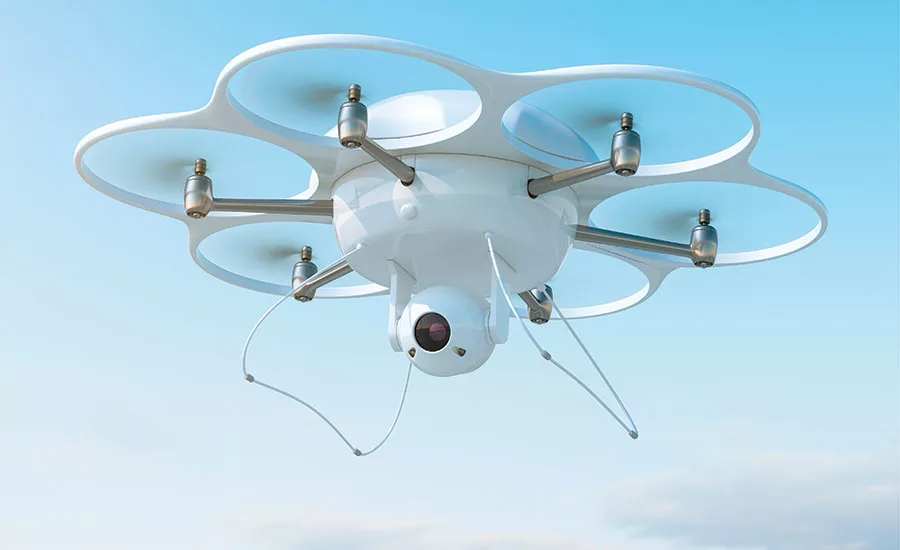Advancements in Technology, Regulatory Fronts Could Make 2016 a Pivotal Year for Drones
Q&A: Charles Mondello

Few technological advancements have created the buzz and captured the imagination of roofing professionals like the advent of drones. The potential to simplify the roof inspection, estimation, and sales process at a relatively low cost can deliver a high-rate of return on investment — not to mention the ability to keep crews safer.
But regulatory challenges with multiple layers of government remain, and debates over drone safety and privacy concerns are ongoing in communities across the country. As president of the Property Drone Consortium (PDC) and chief industry strategist at EagleView Technologies, Charles Mondello remains on the forefront of the development of drones — or Unmanned Aerial Systems (UAS) — for commercial use. The PDC is comprised of leaders from the insurance industry, construction trades and several support enterprises dedicated to promoting further research and developing reason-able regulations for UAS use for commercial purposes. Currently, only those with a pilot’s license or a Rule 333 exemption from the Federal Aviation Administration (FAA) can operate them in this capacity.
|
IRE Session FRO8 |
During this session, Mondello will break down recent developments on the regulatory front, discuss the technology available and under development, and identify how roofing contractors can incorporate the benefits of a UAS into their business model. He recently discussed his presentation with RC prior to the IRE.
RC: Can you catch us up on any recent developments in the overall debate over drone utilization for commercial purposes?
Charles Mondello: The PDC continues to recommend directions and assess policies around the operation of UAS. We see the state and local jurisdictions developing their own legislation often based on privacy. This will continue and will require users to understand legislation at not only the federal level, but region by as they consider UAS operations. Technology has improved and simplified, and it supports users at all skill levels. All of these will be areas of discussion during the briefing. The audience should leave with a better understanding of the UAS and its capabilities, as well as an awareness of policies affecting operation.
RC: Why was 2015 an important year for the development of drones for commercial purposes, and was there any momentum gained on either the technology or regulatory front?
Charles Mondello: There have been many significant developments in the regulatory sphere that have somewhat simplified the ability to fly commercially, with over 3,000 section 333 exemptions for commercial activities approved to date. Highlights include:
- A streamlined Rule 333 process with summary grants of approval for petitions that are substantially similar to prior approvals; a blanket Certificate of Authorization (COA) that eliminates the use of a COA in many instances; no medical class 3 license required; and a sports or recreational pilot’s license will meet the requirements along with previously required commercial pilot’s license.
- A Notice of Proposed Rulemaking issued in February 2015, for possible finalization in 2016, may further loosen requirements for commercial flight including operator certification in place of pilot’s license, and a small UAS category that would enable flights in urban areas.
- A Pathfinder program with the FAA teaming up with commercial entities for research programs in the areas of agriculture, news gathering, etc.
- A simplified FAA commercial platform registration process for non-U.S. manufactured platforms.
- A consumer/hobbyist online registration process which will be extended to commercial operators in early 2016.
RC: What else should we expect in 2016?
Charles Mondello: As noted above, every commercial operator is waiting to see what the final rules will be for commercial flying of UAS. Currently, even with some of the developments in the regulatory sphere, it’s virtually impossible to fly in urban areas, where the greatest need will be. From a technology perspective, advancements in further miniaturization, safety, sensors and collision avoidance across a multitude of new drone platforms are expected to continue.
RC: During Best of Success 2015, you were part of panel that demonstrated the impressive amount of data that an UAS can capture. How would you best describe the potential for drone technology to revolutionize roofing?
Charles Mondello: At the simplest level, current drone technology allows close up, cost-effective visual inspection as well as digital video recording of a roof without requiring an inspector to climb up and subject life and limb to danger. This is an incredible benefit in the best of times, but in the event of fire and post-disaster situations it further eliminates or reduces the need for human intervention in a hazardous environment. Having video that can be shown to other staff and a homeowner increases the legitimacy of a diagnosis and builds trust. With advancements in active and passive sensors (i.e. thermal, infrared, etc.), operators may be able to determine roof conditions, age, sources of damage, materials, defects in installation, and workmanship.
RC: What are some of the biggest misconceptions roofing professionals have about drones?
Charles Mondello: The expectation is that like consumers in general, roofing professionals may differ in their attitudes. Some may welcome the technology as a way to simplify their projects, make them safer and more profitable, and a way to build trust and referrals with their customers. Some may be alarmed at the cost of the platforms, the operating requirements, the required approvals, and the cost of insurance. Others may view them with concern, perhaps seeing them as easing entry into their profession, and therefore a threat. And like consumers in general, they may be concerned about privacy issues.
Charles Mondello has been active with UAS research and strategy for years, with a special emphasis on property inspections, regulatory issues, and standards development. He has multiple degrees in imaging science from the Rochester Institute of Technology, and is certified as a Geographic Information Systems Professional (GISP). He also holds multiple patents in remote sensing/photogrammetry in oblique and real-time data processing.
Looking for a reprint of this article?
From high-res PDFs to custom plaques, order your copy today!







